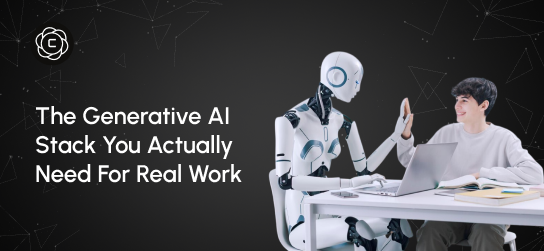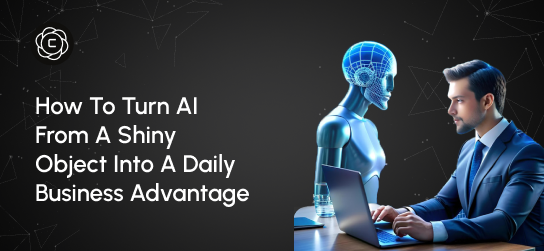Learning Center
Master AI creativity with our comprehensive guides, tutorials, and expert insights. From beginner basics to advanced techniques.
ChatGPT Plus vs Gemini Advanced: Which $20 AI Chatbot Is Actually Worth It?
Introduction
AI is no longer just about speed or capability.
The real difference between tools like ChatGPT Plus and Gemini Advanced lies in how they think, respond, and align with the way we work.
CNET’s recent comparison of these two leading $20-per-month chatbots shows that the next phase of AI isn’t about power. It’s about precision and reliability.
Because at this level, intelligence alone doesn’t win. Alignment does.
The Big Picture: Two $20 Brains, Two Different Philosophies
Both chatbots promise conversational intelligence, creativity, and adaptability. Yet the philosophies behind them are entirely different.
ChatGPT Plus provides access to GPT-4, AI image generation, higher usage limits, and early access to experimental features. Its context window handles 8,192 tokens, and its responses often feel more human, thoughtful, and layered.
Gemini Advanced, powered by Google’s 1.5 Pro model, comes with a massive one-million-token context window and deep integration with Google tools. It includes ImageFX for visuals, code editing, and 2TB of Google One storage.
On paper, Gemini looks stronger.
In practice, CNET found that ChatGPT Plus still feels more intuitive.
That tells us something essential about AI maturity. Bigger isn’t always better. The future belongs to tools that are not broader, but closer to how humans actually think and work.
Recipe Generation: Creativity vs. Integration
CNET asked both chatbots to create a “churro recipe with a Thai twist and pumpkin spice.”
ChatGPT suggested keeping the churro traditional while adding a Thai coconut dipping sauce. It focused on coherence and simplicity.
Gemini went further. It folded pumpkin puree and Thai spices directly into the dough and finished with a lemongrass sugar coating.
Both ideas were creative, but their approaches revealed their deeper design philosophies.
ChatGPT acts like a writer, focused on narrative and clarity.
Gemini acts like a builder, eager to remix and merge ideas.
This is the same balance modern creators seek today. If you have used the Crompt AI Content Writer, you know it captures this perfectly. It writes with adaptability and voice control, not just text generation. It gives creativity form and structure without losing the human rhythm.
Shopping Suggestions: Accuracy in the Details
Next, CNET tested both chatbots on product recommendations by asking for a mid-range red turntable.
ChatGPT suggested good models like the Project Debut Carbon Evo and U-Turn Audio Orbit Special but mistakenly listed one that doesn’t come in red.
Gemini correctly filtered its results, naming models that actually matched the prompt and their available colors. It showed stronger data filtering and fact-checking.
In real-world use, this matters. Most users don’t just want creativity. They want accuracy.
That’s where AI tools designed for analysis make a difference.
For instance, the Crompt AI SEO Optimizer doesn’t just generate keyword ideas. It analyzes search intent, competition, and semantic depth before recommending an optimized list. It understands accuracy as strategy.
Gemini’s precision makes it ideal for research and filtering. ChatGPT’s expressive tone makes it ideal for storytelling. The future of AI will not belong to one or the other, but to platforms that blend both disciplines seamlessly.
Travel Planning: The Focus Gap
CNET asked both models to plan a trip to Festus, Missouri.
ChatGPT delivered local suggestions that were mostly accurate, with the occasional odd inclusion like breakfast at a brew house.
Gemini zoomed out, recommending attractions from nearby St. Louis instead of focusing on Festus itself.
ChatGPT stayed focused. Gemini went broader.
This small difference exposes a larger design challenge in AI systems. Should an assistant prioritize precision or coverage? Do we want specificity or exploration?
In marketing, this distinction defines success.
The Crompt AI Ad Copy Generator, for example, doesn’t write for everyone. It writes for someone — your defined audience, tone, and emotional context. Focus is what makes messages resonate.
Gemini’s strength is its range. ChatGPT’s strength is its depth. Both reveal a truth: attention is now a currency, and AI that focuses will always outperform AI that floods.
Email Writing: Tone vs. Formality
CNET’s next test was an email prompt: “Write a professional yet festive email requesting a day off.”
ChatGPT produced a friendly, emoji-filled version with casual charm.
Gemini replied with a more formal, structured tone, including holiday greetings and even a suggestion to bring treats for coworkers.
Both were correct, depending on context.
The lesson here is tone awareness. AI is evolving from mechanical generation to contextual communication. The best tools don’t just automate words. They understand subtext, emotion, and social fit.
That is why marketers, writers, and founders increasingly use adaptive platforms like Crompt AI, where tone and audience can shift seamlessly between professional, casual, and conversational modes.
Summarization: Precision Under Pressure
Both chatbots were then asked to summarize a 1,600-word video game review.
Their results were equally impressive: clear, structured, and sentimentally aligned with the original text. Yet both missed small emotional or subjective nuances that make human reviews memorable.
This test shows how far AI has come, and how far it still has to go.
Summarization today isn’t just compression. It’s interpretation.
Many professionals already pair generative models with refinement tools to fill these gaps. Writers draft in ChatGPT, optimize with SEO tools, and finalize tone through brand-specific filters. It’s not redundancy. It’s augmentation.
The Verdict: ChatGPT Plus Takes a Slight Lead
CNET’s verdict gives ChatGPT Plus a narrow edge for reliability, depth, and human-like nuance.
Its responses feel thoughtful and consistent, even when it errs.
Gemini Advanced, however, is technically remarkable. Its long context window, code editing, and integration with Google tools make it incredibly versatile.
But the real insight from this comparison is not about who won.
It’s about what the competition reveals.
AI is no longer converging into one perfect assistant. It is diverging into specialized minds that reflect different kinds of intelligence.
ChatGPT feels like the storyteller.
Gemini feels like the analyst.
And Crompt AI represents the future middle ground — a unified space where both kinds of intelligence can coexist.
The Bigger Idea: Reliability Is the New Intelligence
The early AI race was about novelty. Who could write, draw, or code the fastest?
That era is over.
Now, the true differentiator is trust.
Can your AI remember context?
Can it reflect your tone across multiple formats?
Can it stay consistent without collapsing under complexity?
That’s what CNET’s test really measured: reliability in the face of ambiguity.
ChatGPT’s edge lies in its emotional consistency. Gemini’s lies in its data precision. The next generation of AI will combine these two — emotional coherence with factual depth.
The future of intelligence is not just about thinking faster.
It’s about aligning closer to human logic and values.
Closing Thought
CNET’s test reminds us that AI is no longer competing with humans.
It is competing to understand us.
The tools that achieve this — from ChatGPT and Gemini to platforms like Crompt AI- will redefine what it means to create, decide, and communicate.
Because true intelligence is not about output.
It is about alignment.
Table of Content
- Introduction
- The Big Picture: Two $20 Brains, Two Different Philosophies
- Recipe Generation: Creativity vs. Integration
- Shopping Suggestions: Accuracy in the Details
- Travel Planning: The Focus Gap
- Email Writing: Tone vs. Formality
- Summarization: Precision Under Pressure
- The Verdict: ChatGPT Plus Takes a Slight Lead
- The Bigger Idea: Reliability Is the New Intelligence
- Closing Thought
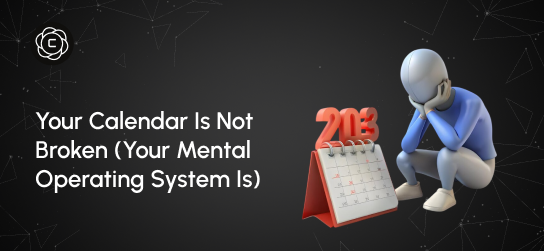
Your Calendar Is Not Broken (Your Mental Operating System Is)
Last month, I watched a founder spend three hours reorganizing his calendar app for the fourth time this year. Different colors, new categories, smarter blocking strategies. By week two, he was back to the same chaotic pattern: overcommitted, constantly running late, and feeling like his day controlled him instead of the other way around. The problem wasn't his calendar. It was the mental operating system running underneath it. Calendar issues aren’t about tools; they’re about how you think about time. They download new apps, try productivity methods, and wonder why nothing sticks. Meanwhile, the real issue sits in how their brain processes time, priorities, and commitments.
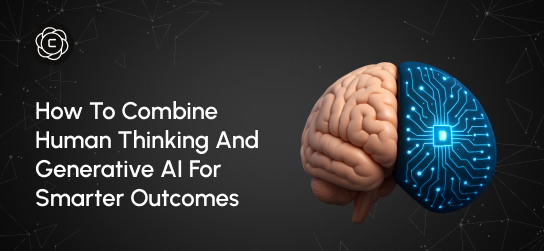
How to Combine Human Thinking and Generative AI for Smarter Outcomes
Last Tuesday, I watched two product managers go head-to-head on the same challenge. Same tools. Same data. Same deadline. But the way they used AI couldn’t have been more different and the results made that difference unmistakable. One delivered a generic solution, familiar and easily replicated. The other crafted a proposal that felt thoughtful, grounded, and strategically distinct. Their CEO approved it for implementation within minutes. The gap wasn’t technical skill or AI proficiency. It was their thinking architecture, the way they framed the problem, used AI to explore, and layered in human context to guide the output.
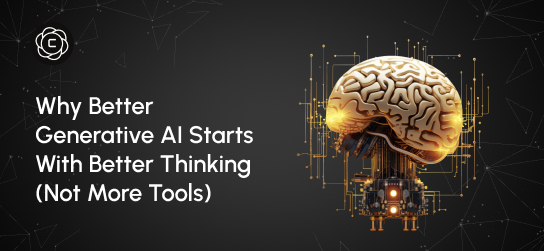
Why Better Generative AI Starts With Better Thinking (Not More Tools)
Four months ago, I watched a marketing director spend $400 on AI subscriptions only to produce the same mediocre content she'd always created. Her problem wasn't the tools. It was her approach. This scenario plays out everywhere. Professionals accumulate AI subscriptions like digital trophies, believing more tools equal better results. They're missing the fundamental truth: generative AI amplifies your thinking, not replaces it. The best AI users I know don't have the most tools. They have the clearest thinking processes.
Stay Updated
Get the latest AI insights, tutorials, and feature updates delivered to your inbox.

